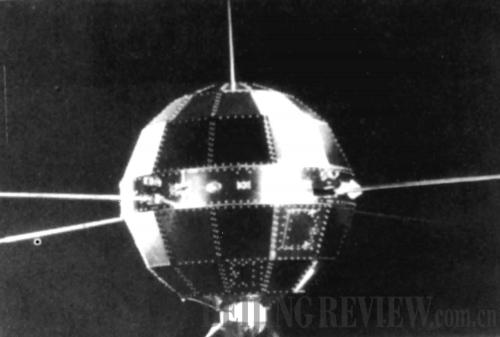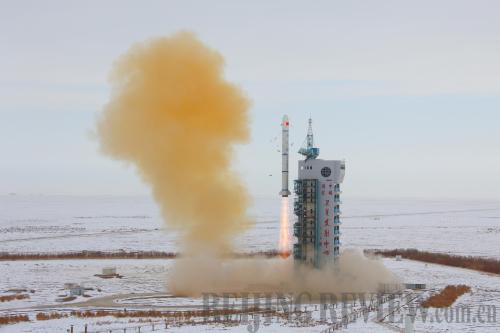|
 |
|
EXPLORING THE SPACE: China launches its first man-made satellite Dongfanghong 1 on April 24, 1970 (XINHUA) |
On April 24, 1970, China successfully launched its first man-made satellite, Dongfanghong 1, marking the first step of the country's venture into space. Although 13 years after the former Soviet Union, it took place when the country's economic and industrial strength was by no means comparable to any superpower.
China's space program dates back to 1958 when late Chinese leader Mao Zedong issued a call to "make our own man-made satellite" at the Second Session of the Eighth National Congress of the Communist Party of China (CPC).
In 1965 then Premier Zhou Enlai approved in principle a proposal for a project to develop China's man-made satellite. Three years later, the China Academy of Space Technology (CAST) was officially established, with Qian Xuesen, who is known as the father of China's missile and space program, acting as its first president.
 |
|
WIDER APPLICATION: China launches Shijian 11-01 satellitefor for science and technology experiments, on November 12, 2009 (XU HAIHAN) | Lacking experimental equipment and qualified technical personnel and facing economic and technical blockades from Western countries, CAST broke through hundreds of technical barriers and guaranteed the progress in the research and manufacture of Dongfanghong 1. Once in orbit, all apparatus on the satellite worked for longer than expected and sent back an avalanche of data. China became the fifth country in the world to develop and launch satellites independently. And, in many areas such as weight, tracking, and temperature control Dongfanghong 1 surpassed the first satellites launched by the other four countries: the Soviet Union, the United States, France and Japan.
Innovation and application
The successful launch of Dongfanghong 1 stands out as a landmark of China's space industry. The lift-off of the Shenzhou 5 spacecraft in 2003 gave China further title to its place in space. From unmanned to manned craft, the country's space technology has gradually developed. Statistics show during the 11th Five-Year Plan (2006-10) China launched eight satellites on average every year; compared to an annual average of 1.5 before the Ninth Five-Year Plan (1996-2000). The cycle of satellite manufacture has been greatly shortened.
Now China has various kinds of satellites with different fields of application. Its technologies of satellite retrieval, multi-satellite launching, lunar exploration, and manned spaceflight have risen to an advanced level. With geostationary, navigation, resources, and remote-sensing satellites flying in formation, there is great potential in space technology applications.
A number of space technologies have been applied already in the fields of energy, transportation and health care, helping to reform traditional industries. Space breeding experiments have given crops stronger resistance to disease, drought and flood. And, with the help of satellite remote-sensing technology to forecast typhoons, storms, mudslides, floods, droughts and earthquakes, economic losses from natural disasters have been greatly reduced.
In addition, CAST has established six main state labs and a complete system of spacecraft design, testing and manufacturing, enhancing the country's capacity of putting into practice schemes for deep-space exploration.
Future objective
The 12th Five-Year Plan (2011-15) puts a strong emphasis on further perfection of space infrastructure. With spacecraft development as a central research project, China will build an orbital space station, and continue to conduct the tasks of manned spaceflight and lunar exploration including a probe landing. The country's space program also takes international cooperation and commercial applications into consideration.
In the past 40 years, China has built up its space industry from literally nothing. History tells core space technology cannot be bought. Only with a strong capacity for technical innovation, self-reliance and hard work will China's space industry continue to make remarkable headway in the future.
The authors are president of the China Academy of Space Technology and president of China Spacesat Co. Ltd.
|
